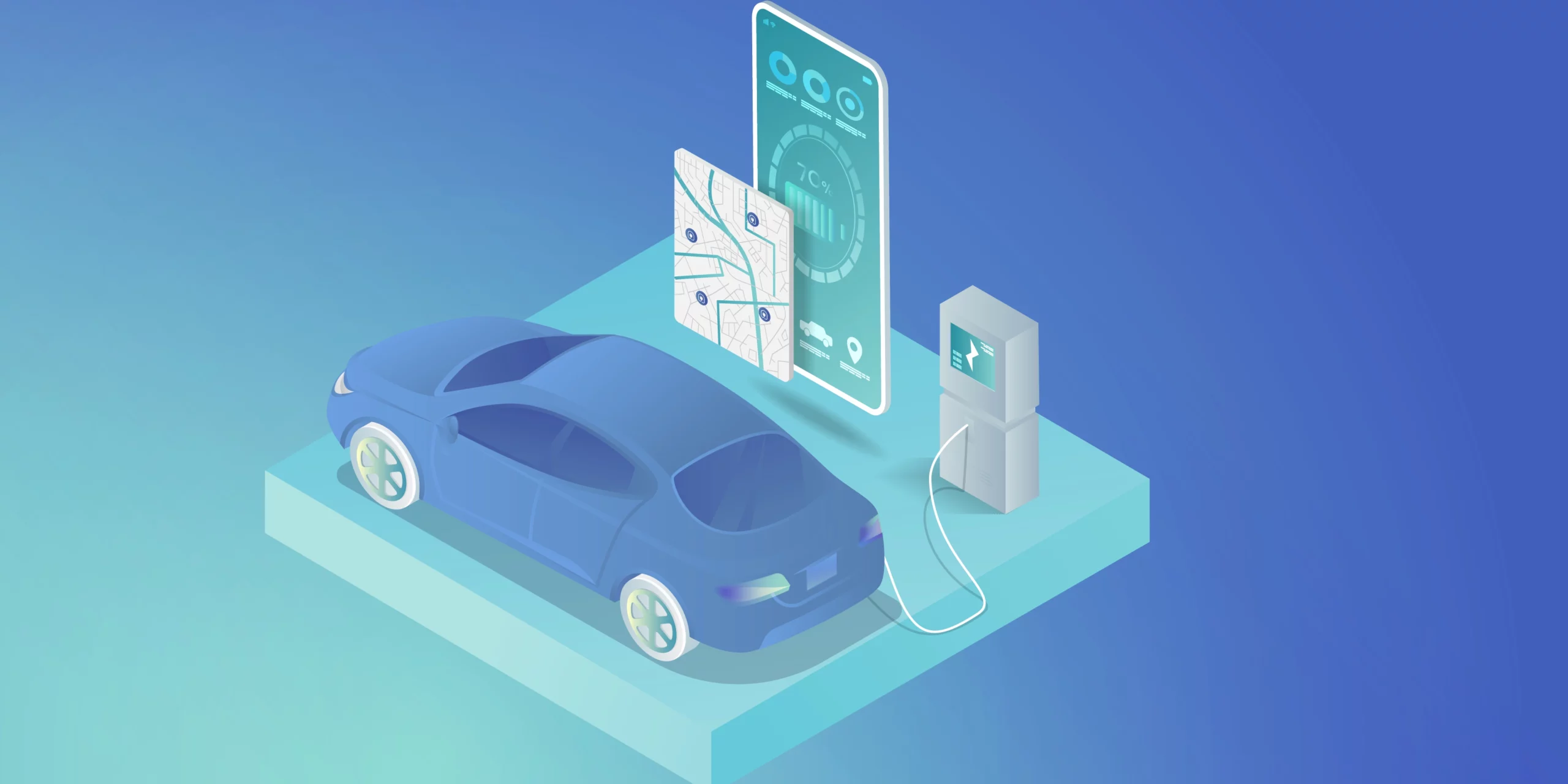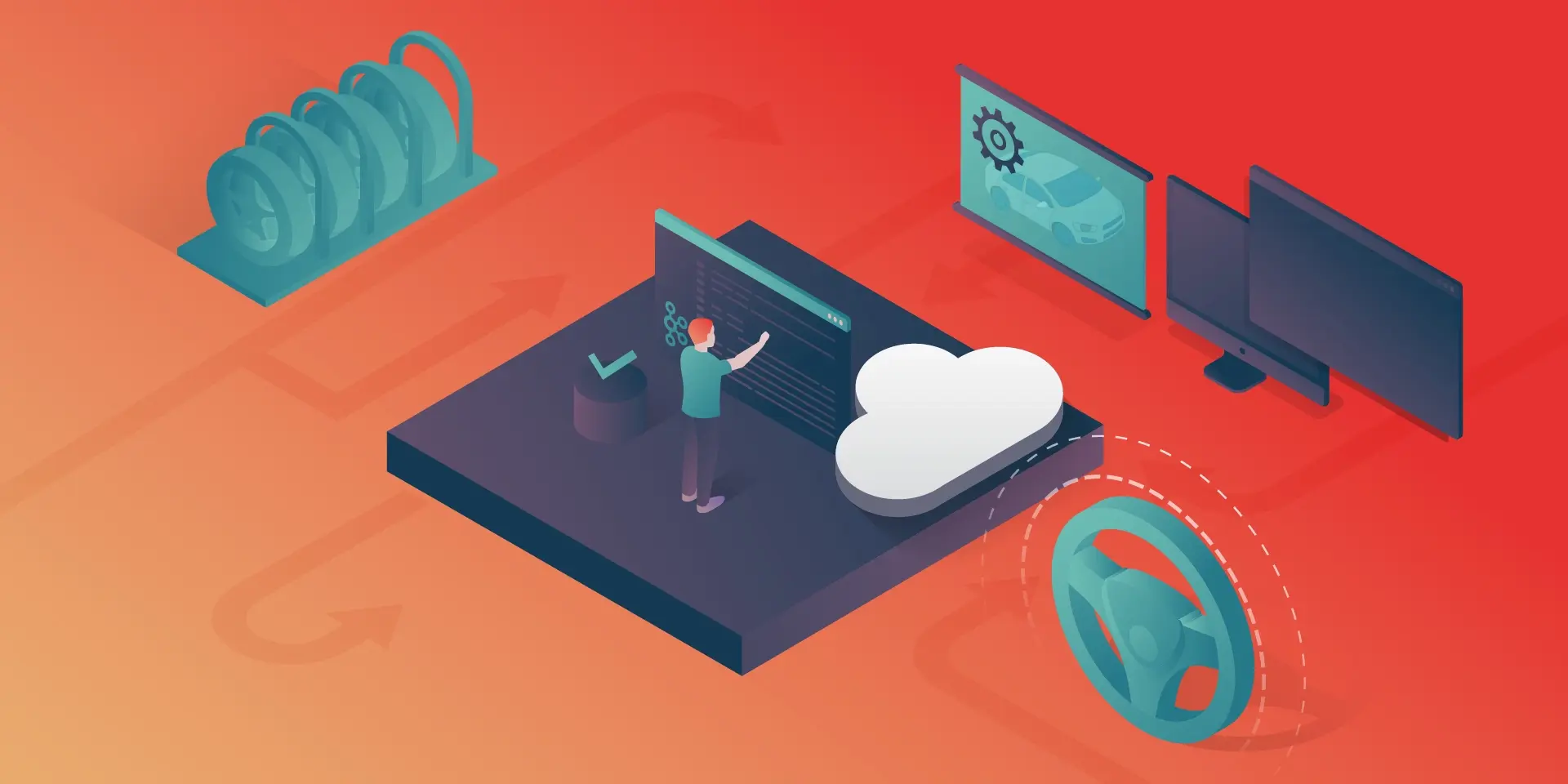6 Strategies for OEMs to Improve Electric Vehicle (EV) Range

Electric vehicles (EVs) play an important role in fighting climate change and making transportation less dependent on fossil fuels. With the support of a growing number of governments, the global EV market has expanded quickly and has already reached more than $1 trillion in sales. 73 million electric vehicles are estimated to be sold globally by 2040, according to predictions made by Goldman Sachs Research, making up 61% of all new car sales globally.
Despite their booming popularity, the EV market still faces challenges. These include the scarcity of charging stations, concerns about vehicle performance, a limited selection of EV models available, and high prices. These factors, coupled with the “range anxiety” phenomenon, can impact EV adoption rates. Range anxiety is the fear or concern that an EV driver may experience due to the limited distance an EV can travel before needing to recharge.
In this article, we will discuss the need for electric vehicle manufacturers to cater to different challenges and expectations to bridge the gap between early EV adopters and the broader consumer market.
Challenges to EV range optimization
The parameters influencing the range of electric vehicles (EVs) can be categorized into external and internal factors.
Internal Factors:
- Motor efficiency: The more efficient the motor, the less energy it needs to operate, which means more energy can be used to power the vehicle and increase its range.
- Battery: Higher battery capacity, better chemistry, and a higher charge state can enhance range.
- Infotainments and comfort features: Energy-intensive features, such as large infotainment displays and power-hungry HVAC systems, can consume significant amounts of energy from the battery.
External Factors:
- Vehicle weight: Heavier vehicles require more energy, which influences their range.
- Traffic conditions: Stop-and-go traffic and congestion can impact energy consumption.
- Driver’s behavior: Aggressive driving, excessive speeding, and rapid acceleration influence energy levels.
- In addition, there are challenges associated with charging infrastructure for electric vehicles (EVs)
The “charge anxiety” becomes even more noticeable than the range anxiety in this context. It’s a feeling of unease or stress that EV drivers may feel regarding the availability and accessibility of charging infrastructure. It encompasses concerns about the knowledge regarding charging points’ locations and their reliability.
Possible solutions – what can OEMs do to Improve EV Range
Smart energy management
OEMs (original equipment manufacturers) can play a vital role in advancing intelligent systems for managing EV charging demands through various means, such as the development of communication protocols, the implementation of load management strategies, the enablement of V2G (vehicle-to-grid) technology, the incorporation of renewable energy integration, and the provision of data analytics and insights.
For example, one of the important aspects of smart energy management for EVs is load management, which involves off-peak charging to take advantage of lower electricity rates, prioritizing charging when renewable energy sources are abundant. Another example is the vehicle-to-Grid (V2G) technology that allows EVs to act as energy storage systems, providing benefits such as grid stabilization and potentially extended range by replenishing stored energy during low-demand periods. OEMs can use V2G technology to transfer electricity between the EV battery and the power grid, allowing owners to sell excess energy back to the grid during peak hours.
Smart charging
Smart charging is a cloud-based technology that adapts electric vehicle (EV) energy usage based on the present status of the energy grid and the cost of charging events. It can also use the energy stored in EV batteries to address sudden spikes in grid demand. Smart charging is designed to make EV charging easier, less expensive, and more efficient in various ways:
- While the optimal geographic distribution of CSs can reduce travel and queuing time for EV owners, infrastructure development is neither cheap nor simple. Therefore, developing intelligent charging scheduling schemes can improve owners’ satisfaction.
- Power constraints influence the smart charging schedule, which is set to avoid power grid overload and interruptions. The system reduces congestion by using smart charging, and EVs can be charged off-peak.
- Smart charging prioritizes. Driving distance, EV charging capacity, State of Charging (SOC), charging cost, and other variables can all have an impact on optimal CS allocation for personal EVs. However, commercial EV scheduling strategies should prioritize maximizing on-road service hours and driving cycles with continuous driving to avoid service profit and daily net revenue losses. Smart charging can help implement such priorities.
EV OEMs can drive the advancement of smart charging technology through various means. This could involve integrating EV and charging infrastructure solutions, potentially through proprietary charging systems or collaborations with charging infrastructure providers, to enable seamless communication and coordination between stations. Integrated solutions can optimize charging based on factors such as power limits, pricing, and priority, leading to faster charging and enhanced energy storage capabilities.
OEMs may also optimize charging with AI and data analytics and equip vehicles with user-friendly app interfaces that allow EV owners to schedule and manage charging according to their preferences. Examples include intuitive scheduling, real-time pricing, and charging status updates.
Optimizing aerodynamics
Aerodynamics improves the range of electric cars (EVs). At high speeds, aerodynamic drag – air resistance – consumes energy. By reducing aerodynamic drag, EVs enhance efficiency and range. Optimizing aerodynamics can increase EV range in several ways:
- Sleek, aerodynamic design: EV manufacturers may build vehicles with little drag. Sloped rooflines, streamlined body shapes, and smooth underbody panels are examples. Minimizing aerodynamic drag minimizes the energy needed to overcome air resistance, allowing the EV to travel further on a single charge.
- Wheel design: Wheel design affects aerodynamics. Aerodynamic coverings and spoke patterns can reduce turbulence around EV wheels, which reduces drag and increases range.
- Sealing and gap management: In the case of electric vehicles, reducing air resistance is crucial to increasing their range and efficiency. EV makers can achieve this by sealing and managing gaps in body panels, doors, and other exterior components.
- Windscreen and window design: Curved windscreens and flush-mounted window frames reduce airflow turbulence and drag. This also improves aerodynamics and range.
Battery technology
Electric vehicle battery monitoring and analysis is an important aspect of EV battery management. A battery management system (BMS) controls the battery electronics and monitors its parameters such as voltage, state of charge (SOC), temperature, and charge and discharge. Using an algorithm, the BMS also evaluates the battery’s health, percentage, and overall operational state. Fitting an EV with a BMS can improve safety and ensure the battery functions optimally.
High-capacity batteries that can extend EV range
OEMs are continually working to improve EV batteries, with the goal of achieving high energy density and rapid charging rates. Researchers from the Pohang University of Science and Technology (POSTECH) have invented a new battery technology that might increase the range of electric vehicles by up to 10 times. The technology involves a layering-charged, polymer-based stable high-capacity anode material. According to the research team, the new technology could be commercialized within five years, which would have significant consequences for OEMs, who will need to keep up with the rapidly evolving battery optimization techniques.
Battery power optimization
COVESA (Connected Vehicle System Alliance) is currently working on a project aiming to optimize power consumption in electric vehicles by limiting the power usage of auxiliary loads and optimizing battery utilization over time. The underlining assumption of this project is that the optimization scenarios for different loads, such as displays, speakers, and windows, can be identified for various situations.
The ultimate goal would be to optimize system load and vehicle usage scenarios at critical SoC conditions (like 20%, 15%, and 10%) to best use battery power and increase the travel range. The State of Charge (SoC) is a crucial metric for measuring the remaining power in a battery, often represented as a percentage of the total capacity. Accurate estimation of SoC is essential for protecting the battery, preventing over-discharge, improving battery lifespan, and implementing rational control strategies to save energy. It plays a critical role in optimizing battery performance and ensuring efficient energy management.
There are already some attempts at system load optimization. For example, ZF has developed a heated seat belt that provides warmth to occupants in cold temperatures and can help improve energy efficiency in electric vehicles without sacrificing the comfort of HVAC services. The heating conductors are integrated into the seat belt structure, providing close-to-body warmth immediately after the driving starts.
Estimating EV range and supporting efficient EV routing
Improving range and efficiency with OTA
Range estimation and efficient routing support through Over-the-Air (OTA) updates can significantly improve the use and convenience of electric vehicles. EVs can accurately predict their remaining range and design the best route using real-time data and advanced algorithms that take into account the battery’s state of charge, road conditions, traffic, and availability of charging stations. OTA updates can provide timely map updates, traffic statistics, and charging station details, allowing EVs to dynamically change their routes for the most practical and effective charging stations.
Examples:
In 2021, Volvo announced that it would introduce its over-the-air (OTA) software upgrade to its all-electric vehicles to enhance range in various ways. These include smart battery management and features, such as a timer and an assistant app to aid drivers in achieving optimal energy efficiency. One of the highlights – the Range Assistant – is specifically designed for EVs and provides valuable insights to drivers in two key areas. Firstly, it helps drivers understand the factors impacting the range of their EVs and to what extent they affect them. Secondly, it includes an optimization tool that can automatically adjust an electric vehicle’s climate system to increase its range.
EV Mapbox. The system can foretell the vehicle’s range using advanced algorithms and suggest convenient charging outlets en route. It accurately predicts the vehicle’s charge level at the destination based on criteria including the charge depletion curve, ambient temperature, speed, and route slope. It takes into account all charging stations, preferred driver charging networks, and personalized settings. This allows the system to recommend detours and ensure optimal route planning.
Ford’s Intelligent Range is a solution that keeps tabs on the driver’s routine, the car’s status, traffic reports, weather forecasts, geographical and climatic data, and more. The data is then processed by sophisticated algorithms to give the driver up-to-the-minute information on their remaining battery life.
Optimizing routing by collecting infrastructure data
COVESA is currently engaged in a project that examines how OEMs utilize data from third parties collected at charging points. This information is often fragmented and fails to provide adequate benefits to customers who encounter issues such as broken chargers or charger occupancy. In order to promote efficiency and growth in EV charging, data standardization and sharing are crucial. The project aims to develop a solution that grants access to a standardized data model or database hosted in the cloud, which includes anonymized car data on charge events. This data encompasses precise charger location, maximum power, time to reach 80% State of Charge, and other advanced data points to enhance the overall EV charging experience.
Addressing range anxiety directly
All the above solutions aim to give EV adoption an additional push and reduce consumer anxiety. Another way to achieve this goal is by educating potential EV owners about the range of capabilities of different models and how to plan trips accordingly. Advertising and offering EV trial rides can help dispel misconceptions and alleviate range anxiety. Still, more options are available, for example, fueling station locators or charging station search tools. Potential customers can also access dedicated reports with answers to common questions about electric vehicles and plug-in hybrids that help them choose the right EV for their needs.
Conclusion
As the demand for EVs continues to grow, extending the range of these vehicles is crucial to address the concerns of potential buyers and enhance their overall usability. OEMs can take several steps to improve EV range, making them more attractive to consumers and accelerating the transition to a sustainable transportation future.
Check related articles
Read our blog and stay informed about the industry's latest trends and solutions.
see all articles






